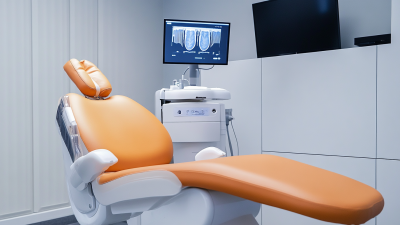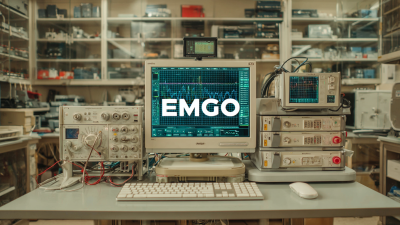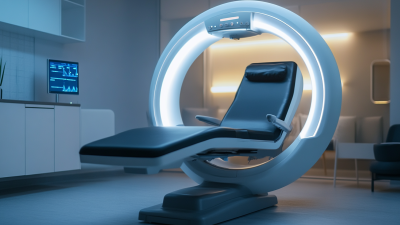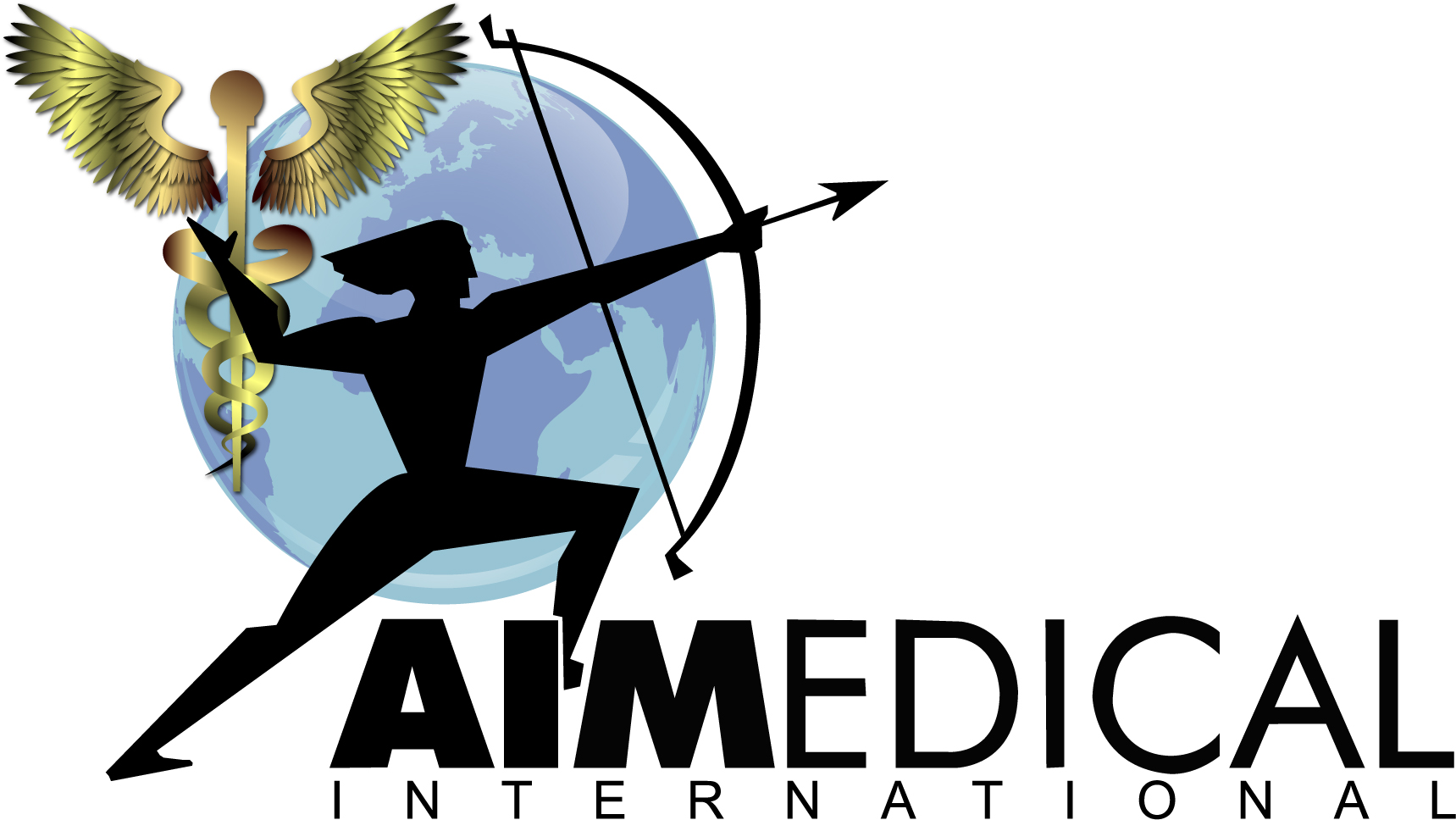Exploring EMG Systems Innovations at the 2025 China Import and Export Fair: Insights for Industry Growth
As the global market for EMG Systems continues to expand, with a projected CAGR of 12.3% from 2023 to 2028 according to the latest market research reports, the 2025 China Import and Export Fair presents a pivotal platform for industry stakeholders. This event not only showcases cutting-edge innovations in electromyography technology but also facilitates networking among professionals dedicated to enhancing the functionality and applicability of EMG Systems across various sectors.

The integration of advanced features such as wireless connectivity and real-time data analytics in EMG Systems is reshaping how medical diagnostics and rehabilitation are conducted, highlighting the rapid technological advancements within this field. Insights gleaned from the fair will be crucial for companies aiming to capitalize on emerging trends and drive industry growth, ensuring they remain competitive in an increasingly dynamic marketplace.
Innovative EMG Technologies at the 2025 China Import and Export Fair: A Comprehensive Overview
The 2025 China Import and Export Fair serves as a vital platform for showcasing innovative technologies, particularly in Electromyography (EMG) systems. These groundbreaking technologies are revolutionizing various industries, from healthcare to automotive, by enhancing the efficiency of muscle activity detection and analysis. As the global automotive landscape evolves, integrating advanced EMG systems into vehicle design can lead to improved driver safety and comfort. The fair highlights inventions that not only push the boundaries of technology but also signify a shift towards smarter and more responsive machinery.
Tips for navigating the innovations at the fair include engaging with exhibitors to understand the practical applications of EMG technologies. Knowing the potential of these systems can help businesses harness their capabilities for enhanced productivity. Additionally, attending relevant workshops may provide insights into the latest trends and future directions of EMG technologies, ensuring industry stakeholders stay ahead of the curve.
The focus on EMG systems at the fair underscores a broader trend of innovation driven by emerging markets. By embracing these technologies, companies can contribute to sustainable growth while adapting to the rapidly changing demands of the global marketplace. Engaging in discussions with thought leaders at the event could further inspire new ideas and collaborations.
Key Industry Stakeholders and Their Role in EMG Systems Development
The 2025 China Import and Export Fair is set to showcase groundbreaking innovations in Electromyography (EMG) systems, drawing attention from various industry stakeholders who are pivotal in shaping its future. From manufacturers to researchers, these key players collaborate to refine EMG technologies, ensuring they meet the evolving needs of healthcare and sports performance. Their contributions facilitate advancements in signal processing, device miniaturization, and data analytics, pushing the boundaries of what EMG systems can achieve.
**Tips:** For industry professionals attending the fair, networking is essential. Engage with experts to gain insights into emerging trends and technologies. Additionally, consider participating in workshops to enhance your understanding of current innovations and applications in EMG systems.
Stakeholders also include regulatory bodies and patients, whose feedback is invaluable. Regulatory entities ensure that new technologies comply with safety standards, while patient perspectives guide user-centric design. By fostering strong relationships between all parties, the EMG industry can thrive, leading to enhanced products that improve diagnostics and patient outcomes.
**Tips:** Keep an eye out for presentations that highlight case studies on successful stakeholder collaborations. These sessions can provide rich examples of best practices that can be adopted in your own projects.
EMG Systems Innovations at the 2025 China Import and Export Fair
Potential Applications of EMG Innovations in Healthcare and Rehabilitation
The healthcare and rehabilitation sectors are poised for substantial advancements driven by innovations in electromyography (EMG) systems. According to market forecasts, the rehabilitation robotics market is expected to grow from $457.5 million in 2024 to $1.4296 billion by 2031, achieving an impressive compound annual growth rate (CAGR) of 17.68%. This growth reflects the increasing integration of technology in rehabilitation practices, enhancing recovery outcomes for patients with mobility impairments.
Additionally, recent reports indicate the emergence of brain-computer interface (BCI) technologies in healthcare, projected to generate a market value of approximately $37.5 billion. These technologies are expected to revolutionize rehabilitation methods by allowing seamless interaction between the human brain and external devices, thus facilitating personalized therapy solutions. As the applications of artificial intelligence in medical settings continue to evolve, a focus on regulatory frameworks and innovative incentives is essential to ensure the safe adoption of these transformative technologies. The confluence of EMG advancements, BCI potential, and AI-driven healthcare solutions signifies a new era for patient rehabilitation strategies, promising enhanced efficacy and improved quality of life.
Challenges and Opportunities in the EMG Market: Insights from the Fair
The 2025 China Import and Export Fair provided a platform for industry leaders to delve into the ongoing challenges and opportunities within the Electromyography (EMG) market. With the global EMG market expected to grow at a compound annual growth rate (CAGR) of 8.4% over the next five years, reaching approximately $1.5 billion by 2028, it is crucial to address the barriers hindering this growth. Key challenges identified include the high cost of advanced EMG devices and the lack of skilled professionals who can operate and interpret these complex systems effectively. Participants at the fair highlighted the pressing need for enhanced training programs and cost-effective solutions to make EMG technology more accessible.
Opportunities for growth in the EMG sector are substantial, particularly as innovations in wearable technology and telemedicine continue to evolve. Reports indicate that the integration of EMG systems with AI and machine learning is paving the way for more personalized health solutions. Moreover, the rising prevalence of neuromuscular disorders, which affects around 1 in 1,000 individuals globally, underscores the necessity for advanced diagnostic tools. The fair showcased several cutting-edge EMG innovations aimed at improving patient outcomes, signifying a robust potential for industry expansion as these technologies become more widely adopted in clinical settings.

Future Trends in Electromyography: Predictions for Industry Growth and Adoption
The electromyography (EMG) devices market is poised for significant growth, with projections indicating a market size of approximately USD 1,658.9 million by 2032, representing a robust compound annual growth rate (CAGR) of 8%. This growth is driven by advancements in technology and an increasing focus on improving diagnostic accuracy and patient care in neuromuscular disorders. As industries adopt innovative EMG systems, the integration of artificial intelligence and improved sensor technology is expected to enhance data collection and analysis methods, paving the way for more efficient therapies and treatments.

Moreover, the healthcare industry's shift towards personalized medicine underscores the rising demand for EMG devices. With healthcare providers increasingly leveraging neuromuscular assessments for tailored interventions, the adoption of these technologies is anticipated to accelerate. Predictions also highlight that as more healthcare facilities invest in cutting-edge EMG systems, the overall market landscape will evolve, offering new opportunities for growth and innovation. As a result, industry stakeholders must stay attuned to these trends, aligning their strategies to harness the full potential of electromyography advancements in the coming years.
Related Posts
-

Innovative Approaches to Tms Magnetic Stimulation Solutions
-

Addressing Common Challenges in Sourcing the Best Electromyography Equipment for Global Buyers
-

Understanding Transmagnetic Stimulation: A Comprehensive Guide to Its Applications
-

2025 Trends in Magnetic Stimulation Technology: How To Choose the Best Machine for Your Needs
-

How to Elevate Your Business Efficiency with TMS Devices: A Comprehensive Guide
-

Transforming Manufacturing: Insights into Tomorrow’s TMS Machine Market Dynamics
